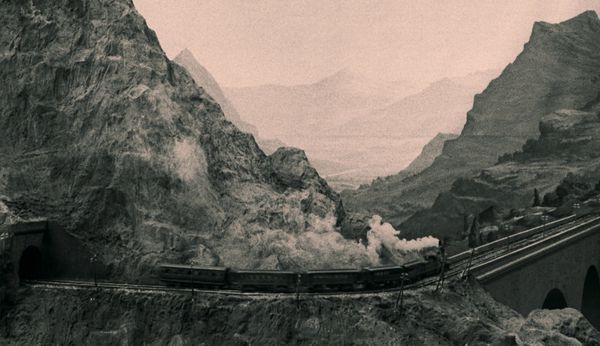Eye For Film >> Movies >> Fantômas (1913) Film Review
Fantômas
Reviewed by: Donald Munro

Fantômas is the first of Louis Feuillade's crime series. It was first shown in the late spring and summer of 1913. In its time it was a huge hit with the French public. As a piece of silent film it is now seen, along with other works by Feuillade, as highly influential in the development of cinema.
Set at the end of the Belle Époque, the five episodes in the series are an adaptation of the Fantômas novels by Marcel Aline and Pierre Souvestre. The eponymous crime lord is a forerunner of the criminal mastermind and masked super villain. He is a step away from the Gothic and a step towards the more modern depictions of the psychopathic criminal and serial killer. A master of the underworld, he controls a network of Apaches gangs. His crimes are spectacular, more about sensationalism than profit. A master of disguise, he toys with the police and exhibits a superhuman ability to evade justice.

Throughout the films, Fantômas (René Navarre) is relentlessly perused by Inspector Juve (Edmund Breon), who is determined to send the criminal to the guillotine. Each episode follows the same general plot. An extraordinary crime is committed by Fantômas, Juve and his compadre, the newspaper reporter Jérôme Fandor (Georges Melchior), track down and capture the crime lord, but in a strange turn of events Fantômas escapes and evades justice. The ending isn't a twist, it's what the audience at the time expected, it's what they were waiting for (they knew the novels). It's a bit like knowing that Columbo knows the killer's identity right from the start. The episodes are all about the process, the game played by the three central characters, not the outcome. Apart from the first episode, À L'ombre De La Guillotine (In The Shadow Of The Guillotine), the films are essentially interchangeable.
Fantômas is early in Feuillade's directorial development. His interiors are somewhat cluttered. The scenes are mostly shot front on, like a play in a theatre, though he does arrange the characters and action diagonally in the exterior shooting. This gives the outdoor scenes a dynamic feel that is lacking in a lot of contemporaneous works. The series has some striking visuals, many of which have become a mainstay of spy and crime movies. The depiction of the Apache gangs is mimicked by Alex and his droogs in A Clockwork Orange and The Crazy 88 in Kill Bill. He is also an early master of the crowd scene. Everyone in his crowds seems to have a reason for being there. They all look like they have something to do. Feuillade's focus is on the visual elements rather than directly on narrative. The stylish depiction of Fantômas's crimes are not just the eye candy of their day, but speak to the villain's motivations and psychology. It is not style over narrative, but the enhancement of narrative by adding context and meaning. It is a full utilisation of the moving picture.
To judge Fantômas by today's standards would be disingenuous. Many directors, such as Fritz Lang and Alfred Hitchcock, built on what Feuillade developed in his first four crime serials. Much of the cinematic language that is used in crime, action and spy films today has its origin in these silent films. The equipment that they were made on was primitive. Without sound, the actors had to convey everything through mime and physical acting, and compered with other filmmakers of his time he was running on a shoe string. But Feuillade pulled it off and produced a seminal work which is still enjoyable to this day.
Reviewed on: 10 Nov 2024














